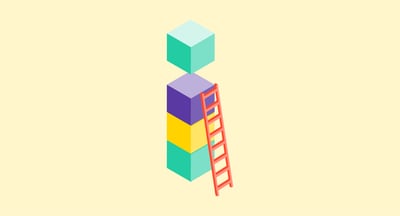November 11, 2024
 by Alex Neighbour / November 11, 2024
by Alex Neighbour / November 11, 2024

Healthcare is an incredibly complex and critical industry. With healthcare workers and their patients at the core, the need to manage HR processes diligently and faultlessly is paramount.
The consequences of mismanaged healthcare HR not only affect your organization and healthcare employees, but also extend to patient treatment. Underwhelming or under-delivered HR processes can cause real damage.
With this in mind, it’s essential to embrace technology to reduce manual processes and ensure a solid HR framework.
Some of the key aspects of modern HR management which can benefit from comprehensive technological solutions include:
Time to jump in and unpack how you can harness HR technology in your healthcare practice to ensure you’re steering the ship in the right direction with the highest level of automation and efficiency possible.
Gone are the days of manual forms, Excel spreadsheets, and hands-on processes. A multitude of possible technologies and solutions are now available, paving the way for a new era in people and culture management.
At the heart of this evolution is talent management, where the right software enables your healthcare organization to streamline processes, enhance employee experiences, and make data-driven decisions.
The right tools will help you meet the unique challenges faced by the healthcare workforce, from automating your recruitment to implementing meaningful learning and development opportunities.
This tech transformation starts with recruitment and onboarding.
Attracting, onboarding, and retaining solid talent is one of the most meaningful functions of an HR department.
Hiring talent is also expensive, so you’ll want to get this right. In fact, ELMO research found that the average cost to hire a new employee in healthcare is 18,172 Australian dollars.
Source: ELMO Software
This hiring challenge is magnified when you account for the particular talent shortage in the medical and healthcare industry, coupled with a high turnover and burnout rate.
This is where you might want to think about augmenting and automating your recruitment and onboarding process with smart software and AI-powered recruitment tools. Modern recruitment solutions can often lend sizeable automation assistance to the following:
Once you get past the initial recruitment processes and candidates are selected, digital onboarding platforms play a crucial role in facilitating seamless employee integration.
As you know, manual onboarding methods are time-consuming and cumbersome. With the right technology, however, new hires can be guided through the process effortlessly.
One of the standout benefits here is the reduction in time-to-productivity, a metric that seasoned HR professionals know well. Organizations with a well-oiled onboarding workflow can foster a sense of belonging and engagement in new hires from day one. This, of course, translates to less dallying about in the early weeks and quicker task completion.
Getting people up to speed is a serious challenge and any solution that assists is quite valuable in terms of productivity and time efficiency. In fact, ELMO’s research found that in the healthcare industry, it took an average of 39 days for new hires to become fully productive. If you can cut that down with better and more efficient onboarding processes, you should.
Source: ELMO Software
Automated tracking systems are tools designed specifically for recruitment automation. They essentially manage processes like job posting and interview scheduling, taking the sting out of typically repetitive tasks.
This means you can churn through reams of resumes and create skill-matched candidate shortlists.
With ATS, you can focus on face-to-face interviewing and undertake more rewarding work while AI tech handles the bulky recruitment admin.
Digital onboarding platforms are designed to create a seamless onboarding experience for new employees and a simplified workflow for you.
These platforms provide online portals to streamline necessary onboarding forms like tax, policy documents, and more. They may also include resources and training materials to assist your new hires as they acclimatize to their roles.
Increasingly sophisticated HR chatbots are also emerging. These chatbots are invaluable tools during onboarding; they can answer basic queries and guide employees through necessary procedures.
When your workers are responsible for vital patient care, their upskilling, continuing education, and compliance are crucial. High engagement levels and relevant skill acquisition can directly impact patient health outcomes and overall organizational success.
As healthcare evolves, ongoing learning and development needs to be prioritized so that your staff stays abreast of best practices and advancements in their fields.
The best way to facilitate this in the modern era is through online and app-delivered learning, or eLearning, as opposed to manual or desk-based knowledge acquisition. Those days are behind us.
This is why many HR professionals have embraced eLearning through learning management software (LMS). Taking up LMS solves a longstanding issue with employee skill building. If you’re able to upskill and develop your team in a simple, app-delivered manner, your team can continue learning at their own pace with custom content. Many HR professionals in the healthcare industry know how challenging the timing of training can be.
In fact, ELMO’s research found that 32% of healthcare organizations said upskilling, reskilling, or cross-skilling was a challenge in 2024.
Source: ELMO Software
Elearning platforms offer flexible training solutions that can be delivered and accessed from any location or device, at any time. This is mobile learning for the modern worker.
The flexibility enabled by LMS is particularly beneficial in healthcare, where staff often work irregular hours or from different locations. Modern LMS is untethered from a desk and is delivered to any device at any time.
LMS solutions usually host a vast library of training modules and content that can be tailored to each individual organization’s needs. Furthermore, you can usually create your own learning material or edit existing content. Modules often include compliance, specialized clinical skills, required compliance, and policy training.
On the more futuristic end of the spectrum, we’re seeing the emergence of spiffy new virtual reality (VR) and augmented reality (AR) learning options.
These immersive technologies can simulate real-life scenarios, allowing healthcare professionals to practice role-specific skills in safe virtual environments. This could be a game-changer.
For example, VR and AR can be used to train staff in emergency situations or surgical procedures, providing realistic simulations that augment learning.
The highly engaging nature of these technologies, as opposed to text or video, can improve retention and help staff gain a better sense of how real-world situations may actually play out.
Employee management in the healthcare sector must continually evolve as the workforce's needs continue to change. As with many industries, technology will continue to play a pivotal role in assisting HR leaders in managing and engaging employees. In fact, it’s virtually indispensable.
Let’s take a look at a few of the key technologies in this space.
Self-service portals allow your employees to manage their personal information and HR tasks independently. By equipping your staff with a simple self-management portal, you not only improve efficiency but also foster a sense of ownership.
Self-service portals are often used for leave requests, accessing benefits, and changing personal details.
By empowering your staff to self-manage these tasks, self-service portals create a massive reduction in admin by placing these responsibilities back on your employees. This is not a bad thing. Many employees relish having ownership over their personal details.
Monitoring staff performance is an ongoing aspect of managing an HR department. Deploying real-time performance management tools can help with this responsibility.
These continuous feedback platforms are crucial for tracking your employee’s performance and facilitating development.
These tools encourage check-ins between employees and managers, promoting a positive culture of feedback and support. Fostering this kind of relationship encourages a more engaged workforce, which will ultimately pay off where it really counts – better patient care.
Paying your staff properly goes far beyond ‘must-have’ functionality. Failure to remunerate your employees on time, in full, every single pay period is enshrined in law and can attract serious penalties for failures and mistakes.
Beyond payroll compliance, you also need to ensure you have attractive pay rates and benefits to attract quality talent. There’s great software out there ready to tackle these tasks.
Payroll software is no longer just a good idea. In Australia, at least, it’s mandatory. Every business in Australia is now required to use basic software to submit single touch payroll (STP) to the ATO.
When you use more advanced payroll software, you can integrate it with a variety of HR tools to automate payroll communication between disparate systems. For example, the addition of benefits management software enhances the user experience by simplifying the process of managing employee benefits like salary sacrifice.
In a modern healthcare practice, HR analytics are fast becoming indispensable. HR analytics tools provide intriguing and valuable insights into workforce trends and staff performance. The more you harvest and deploy this data, the better.
By collecting and crunching data, healthcare organizations can make informed decisions that drive strategic initiatives.
HR analytics tools will gather, analyze, and interpret your HR data so you can make informed decisions and adjust your strategy.
What kinds of data and insights are we talking about here? As an example, if you collect data that shows high turnover in a particular department, it follows that you should be delivering targeted retention measures to decrease staff dissatisfaction.
HR analytics software can also help you identify gaps in your talent pool, so you can start planning future hires and learning objectives.
There are several ways you can help protect your organization’s sensitive employee data, not least of all through better software and compliance training.
In the healthcare sector, rock-solid data security is absolutely crucial. With a significant rise in cyber threats over the last few years, increased sophistication in attacks, and rising data-security consciousness among the community, this must have your full attention.
This starts with ensuring you have world-class data security software that's regularly updated.
Moreover, by prioritizing data security, your healthcare organization will gain trust with your employees, which is crucial to high-functioning organizations.
Learning management systems (LMS) can effectively manage compliance training as well as security training and ensure employee progress.
LMS provides a centralized platform to streamline the learning and compliance process, reducing the risk of non-compliance and ensuring that all of your employees are properly trained in essential areas.
As you’ve seen, it’s not a stretch to say that the savvy adoption of technology in healthcare HR provides a slew of benefits, significantly enhancing your operational efficiency and employee experience.
The aim of the game is to eliminate as many manual and inefficient processes as possible. You do this by automating manual and repetitive tasks with the right software and technology.
The clear benefit of doing so is that you have more time for strategy, people management, and any number of professional pursuits that would otherwise fall by the wayside.
Better yet, automating tasks through the right software provides a far smoother employee experience.
By providing more personalized learning and development opportunities, you can radically improve your onboarding and performance management processes. This, in turn, helps foster a more positive workplace culture and increased staff satisfaction, which is vital in the healthcare sector.
Increased staff satisfaction also leads to increased retention and reduced turnover rates. ELMO’s research found that the average turnover rate in the healthcare sector is 13%.
Source: ELMO Software
By leveraging HR data and analytics, you can hone in on talent gaps and skill shortages, unlocking better workforce planning, training, and succession management. By being able to point to hard data, you’ll also have more ammunition when discussing your strategy with the C-suite.
While the benefits of adopting the right technology in healthcare HR are abundantly clear, there are several challenges that need to be addressed.
Do you have the coin necessary to invest in technology? Do you have budget approval and buy-in from the executive team?
Initial and ongoing investment in technology and software can be significant. Healthcare organizations need to balance their budgets and allocate investments prudently. You’ll need to crunch the numbers, plead the case, and ensure any technology adoption is financially feasible.
People are often resistant to change. Technology adoption is certainly no exception. Expect to encounter reluctance and challenges, which will hinder any successful implementation.
Further, you’ll need to factor in training and support for the new tech and adjust your workflows. To make it work, you’ll need the full support of your people.
When adopting new tech, you’ll be vulnerable to cybersecurity issues, especially when migrating employee data. You’ll need to ensure this is handled with abundant caution to maintain trust and privacy.
There’s little doubt that thoughtful integration of quality technology into healthcare HR will continue to transform how you attract, onboard, and manage talent.
Incremental technology adoption is a necessity to stay ahead of the HR field and shore up organizational success. Not only will thoughtful technology adoption automate and improve your processes, but it will also free you up to concentrate on more meaningful HR matters and strategies that require your personal attention.
To receive the full benefit of any technology and software, it’s wise to have a serious look at your current HR processes and map them out. Where can you see room for outcome improvements? Where can you automate tasks and cut down on manual tasks? Once you have this, take your learnings to the executive team for buy-in and budget approval before you go shopping for solutions.
Discover how clinical communication and collaboration tools are enhancing patient care and streamlining workflows in healthcare.
Edited by Aisha West and Holly Hunt
Alex Neighbour is a seasoned senior writer at ELMO Software who specializes in the software space.
Workforce planning and development is a hot topic in every organization. However, many still...
 by Blake Proberts
by Blake Proberts
It’s never too late to learn something new.
 by Mara Calvello
by Mara Calvello
We all have that one area of expertise we wish we were just a little better at.
 by Mara Calvello
by Mara Calvello
Workforce planning and development is a hot topic in every organization. However, many still...
 by Blake Proberts
by Blake Proberts
It’s never too late to learn something new.
 by Mara Calvello
by Mara Calvello


